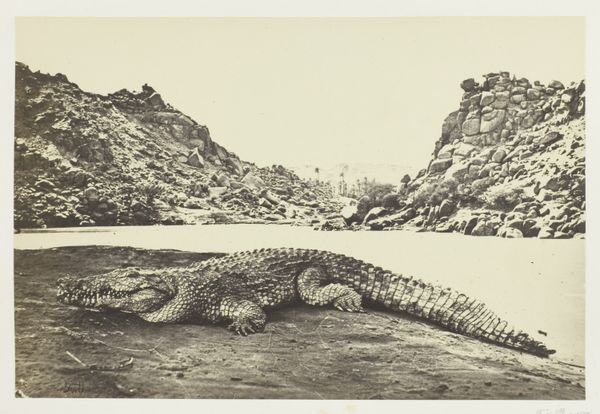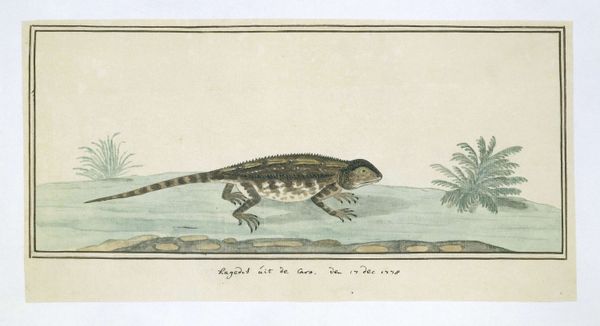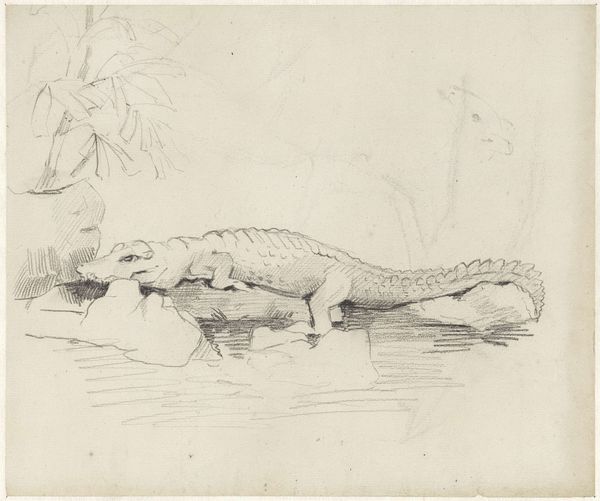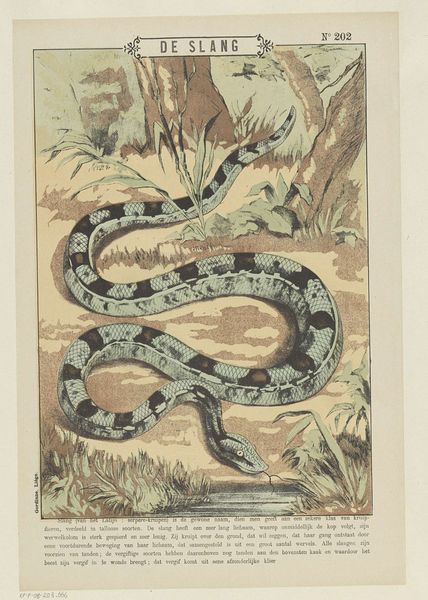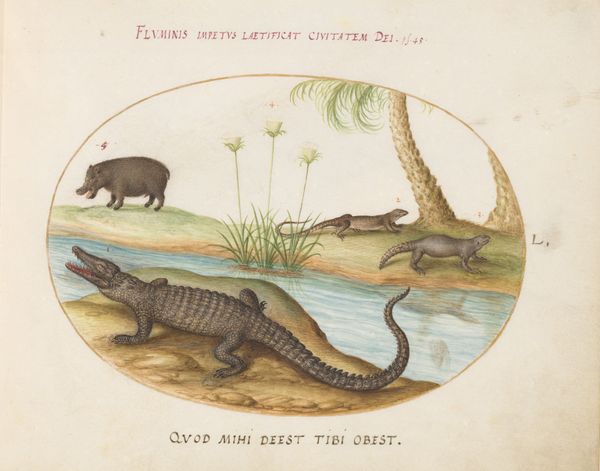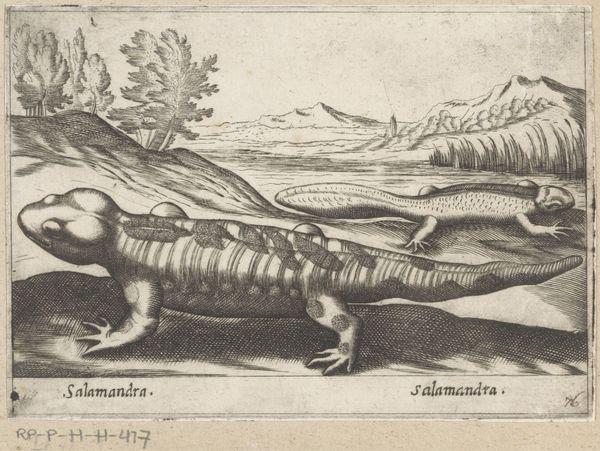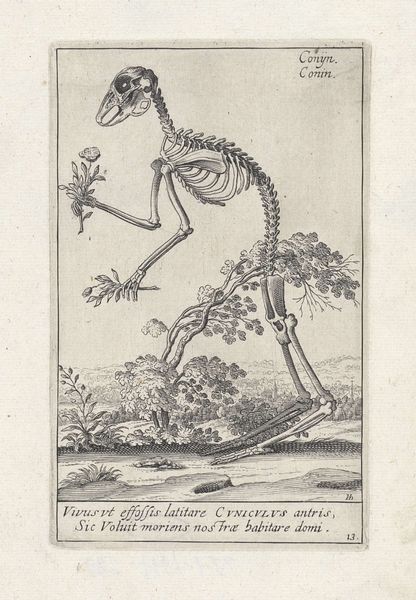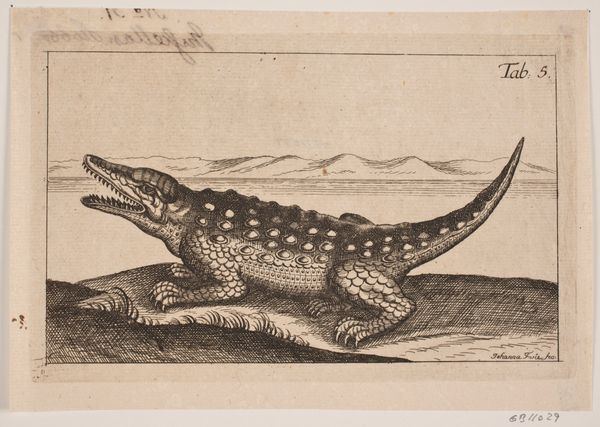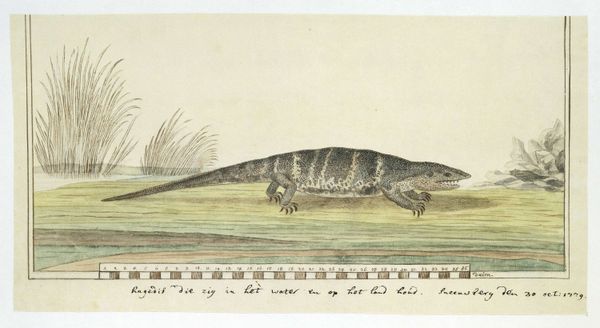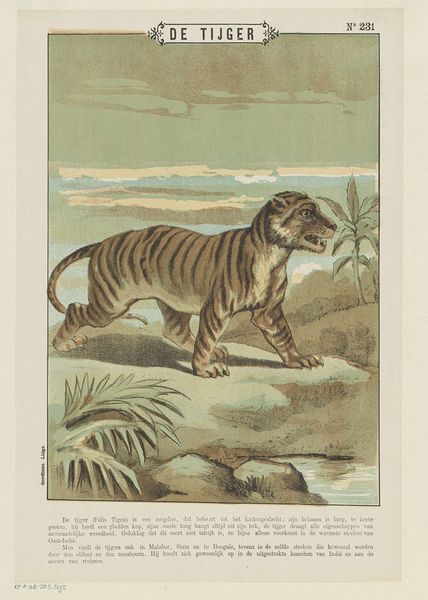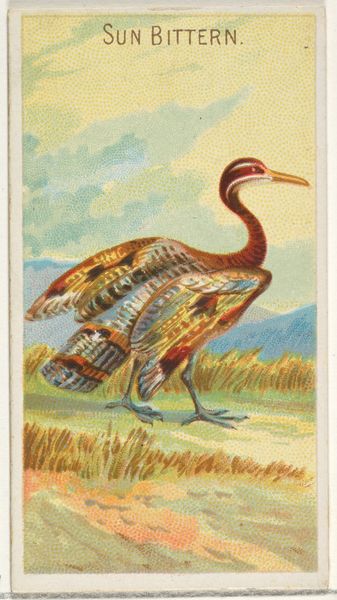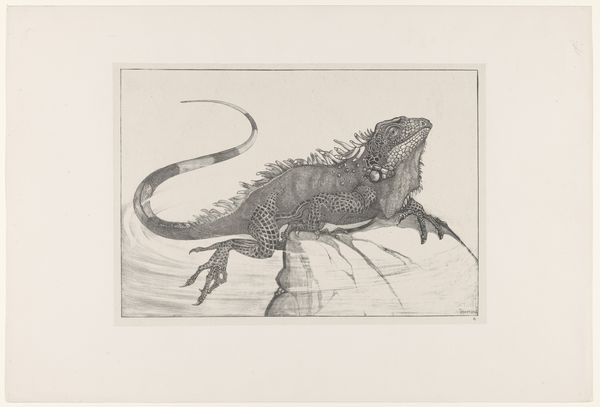
drawing, print, watercolor
#
drawing
#
animal
# print
#
landscape
#
watercolor
#
watercolour illustration
#
watercolor
#
realism
Dimensions: height 400 mm, width 271 mm
Copyright: Rijks Museum: Open Domain
Curator: We're looking at "De krokodil," or "The Crocodile," a print and watercolor by Gordinne, created sometime between 1894 and 1959. It's currently held at the Rijksmuseum. Editor: It possesses a sort of antique stillness, doesn't it? A palpable sense of studied, almost taxonomic observation conveyed through delicate watercolor washes and stark, detailed linework. Curator: Indeed. The composition immediately recalls earlier natural history illustrations. Gordinne offers a rather direct visual encoding of nature. Observe the juxtaposition of the crocodiles situated within the implied symbolism of their domain. It certainly resonates with colonialist perspectives on the natural world. Editor: Yes, the foregrounded crocodile, rendered with pronounced detail—the scale patterns, the toothy grin—creates a compelling contrast with the softer rendering of the landscape behind. See how the artist uses color temperature, that slight change from brown in front to a grayish green towards the water. Curator: These visual strategies can function as reminders, triggering societal scripts. The crocodile as symbol, predator, nature, exoticism: it has long served certain cultural purposes. The almost clinical, unemotional style is itself telling. There is an implied desire for scientific knowledge or cultural dominance here. Editor: Perhaps, but the precision of the linework suggests something more, the artist grappling to create a likeness—to contain what may well be considered 'other' through meticulous documentation. The very texture achieved with watercolor replicates, quite effectively, the coarse skin. Curator: And that tension, between appreciation and domination, becomes part of the cultural legacy embedded in this print. Editor: Ultimately, the lasting resonance lies not only in the historical content of colonial agendas, but within the material components and technical facility. It gives this work an edge that allows new interpretations to emerge.
Comments
No comments
Be the first to comment and join the conversation on the ultimate creative platform.
